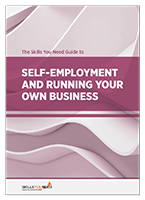Hire Freelancers with Ease:
Tips for Creating an On-Demand Workforce
See also: Induction and Orientation
Hiring a freelancer is one of the best options for organizations that do not need full-time employees but need additional help for their business.
Freelancers can be defined as independent contractors completing or working on projects for a company or an individual on a short or long-term basis and from a remote location.
They work based on the gig industry meaning that they are paid for just the tasks, or ‘gigs’, that they work on instead of having a regular salary.
Although some people argue that organizations exploit the freelance market, it is very beneficial to both the organizations and freelancers who need to be flexible with their source of income.

In addition, many startups lack the capital to employ permanent employees - something that comes with many perks such as health and vacation benefits. Hiring freelancers is, therefore, the only option for these companies to get started and survive in the market as it allows them to interact with the talent pool without having to pay huge amounts of money for it.
However, organizations need to be very careful when hiring freelancers. The process might involve online or phone interviews and having to go through work experiences that might not be verifiable.
This might lead to incorrect hires, which is regarded as the most expensive venture for any organization. When hiring freelancers, organizations need to keep an eye on the following tips:
Finding Freelancers
When hiring a freelancer, the first thing that organizations need to do is to conduct research. This leads them to thousands of freelance marketplaces where freelancers share their profiles.
These marketplaces are amazing resources since they have freelancers with different skills and from different parts of the world. However, it is not all straightforward as it seems.
Even though there might exist all these marketplaces, the best option would involve using a third-party service that specializes in providing freelancers for a certain industry.
For instance, if you are looking for a freelancer in the technology industry, a service such as MVP match that connects the best tech talent with companies to create amazing digital products and solve challenging problems would be one of the best options for you.
Going into the marketplace without considering these service providers might be costly in the long term. For example, a company might find a freelancer seeming to charge quite a bit less for work but, in the end, the costs of the project are double or even triple the initial estimate.
Choosing such a freelancer might save the company some money initially, but they are then forced to overcome a number of issues before the project is complete.
It might take time, the project scope might not be met, and time differences between the freelancer and the project manager may affect the entire project making it more expensive in the long run.
Deciding What to Pay
Going through different freelance marketplaces, you will realize that different freelancers have different rates for similar projects. For instance, a freelancer might quote $1,000 for a project that has another freelancer quoting $10,000.
Pricing and charging are also tricky for freelancers since overpricing can price them out of the market while undercharging might mean that they are not making enough money for their survival.
So, how should organizations evaluate such prices and determine what they should pay?
One of the best ways of deciding how much a company should pay is by evaluating the effort that is expected on the project.
The hiring staff can talk to other stakeholders, partners, and other companies to see how much they would pay for a similar project.
In addition, they can also look at online courses that provide training on the skills required for one to handle the project. This would give them an idea of what the freelancers will need to successfully handle the project.
After understanding what is needed of the freelancers and getting different estimates from partners and other companies, the hiring staff can then break the project into several parts and come up with a number of hours that they believe the project should take before completion. With an estimated hourly rate, they will know how much the entire project would cost them.
Picking the Right Freelancer
This is the most difficult part when it comes to hiring a freelancer. Most companies do not have the privilege of physically meeting their freelancers before hiring them.
However, even if they did, every company needs to make sure that they give their freelancers a small task before they start working to evaluate how well they can work together. This can be a small part of the entire project or something else related to the project.
When picking a freelancer, it is important for organizations to make sure that they do not have their freelance candidates completing any tasks, even if it is test tasks, for free. This is not only disrespectful to the freelancer but also wastes their time.
If an organization finds itself in a situation where it needs to hire a certain freelancer whose portfolio is not comprehensive and lacks enough funds to pay for a test, then it would be better for such an organization to move on to the next available freelancer.
Getting the Freelancer Started
Testing the candidates and picking the right one for your job does not mean that you are done yet. The next step involves getting them started.
Organizations need to evaluate the amount of access to documents and internal tools that they grant to their freelancers. There are things that organizations do not need to expose to outside employees.
Organizations need to make sure that their freelancers have access to everything they need for the successful completion of a project. When granting this access, they (the organization) should make sure that they do not leak their information to the outside world - especially competitors. They can also ask the freelancer to sign a non-disclosure agreement to avoid the release of any confidential information.
Finally, both the organization and the freelancer(s) need to sign an agreement to guarantee that the organization will pay the freelancer and that the freelancer will get the project completed as required.
These days, there are many online tools that allow remote signing of agreements to get the job done with ease.
Further Reading from Skills You Need
The Skills You Need Guide to Self-Employment and
Running Your Own Business
If you are thinking about running your own business, or already do so, but feel that you need some guidance, then this eBook is for you. It takes you through self-employment in easy steps, helping you to ensure that your business has more chance of success.
The Skills You Need Guide to Self-Employment and Running Your Own Business is the guide no new or aspiring entrepreneur can afford to be without!
Based on our popular self-employment and entrepreneurship content.
Conclusion
Freelancers are a great asset to every organization that needs to complete projects within restricted budgets. However, this does not mean that they are suitable for any role in an organization.
Organizations need to evaluate the roles that can be performed by freelancers and keep an eye on the tips discussed above to ensure that they get the right hires. This way, they are going to easily complete their projects, on time and within budget, with a high chance of success.
About the Author
Cristina Par is a content specialist with a passion for writing articles that bridge the gap between brands and their audiences. She believes that high-quality content plus the right link building strategies can turn the tables for businesses small and large.


